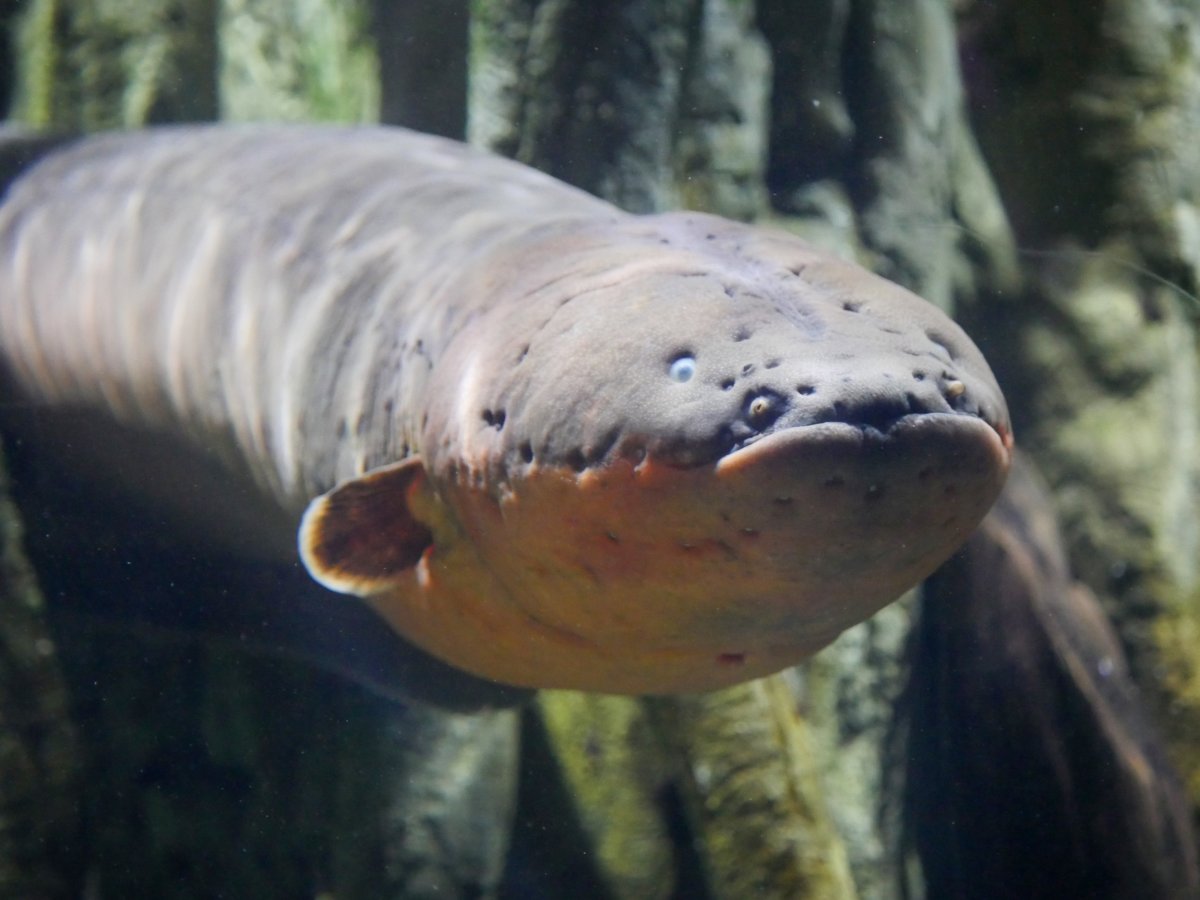In something straight out of a comic book, electric eels may be able to shoot DNA into other animals when they zap them with electricity.
The electric eel can release up to 860 volts of electricity, enough to genetically modify nearby fish larvae via a process known as electroporation, according to new research in the journal PeerJ - Life and Environment.
Electroporation, which allows the transfer of genetic material through the pores in a membrane via a powerful electrical pulse, is an established method of gene transfer in laboratory genetic engineering—but had not been seen in nature before.

The electric eel generates its electrical discharge using special cells known as electrolytes. The eels are teeming with these cells, each of which generates a small amount of voltage by controlling the flow of sodium and potassium ions.
"Electric eels have a specific tissue named electric organ (EO) to generate high voltage discharge. They use their strong electric discharge to catch the prey or attack the enemies," Atsuo Iida, study co-author and assistant professor in biotechnology at Nagoya University, told Newsweek.
The process of electroporation, which is how the DNA enters the larvae's cells, works due to the electrical field creating temporary pores in the membranes of their cells, letting the DNA pass into the cell.
"The detailed mechanism of electroporation is still unknown in even the machine-derived methods. Probably, the pulses cause damage to the cell membrane and induce the negative-charged DNA into the cells," Iida said. "Machine-driven electroporation can induce DNA into various organisms including fish eggs, larvae, adults, mammalian embryos, adult tissues, cultured cells, or prokaryotes (bacteria) cells; thus, we hypothesize that the electric eel-driven electroporation can transfer DNA into not only fish larvae but also other organisms."
In rivers and other water bodies, there are often traces of DNA from other animals and plants floating around known as environmental DNA.
"I thought electroporation might happen in nature," Iida said in a statement. "I realized that electric eels in the Amazon River could well act as a power source, organisms living in the surrounding area could act as recipient cells, and environmental DNA fragments released into the water would become foreign genes, causing genetic recombination in the surrounding organisms because of electric discharge."
The researchers investigated how electric eel electrical discharge influenced the level of DNA transfer from the river into zebrafish in a lab, exposing the fish larvae to a DNA solution with a fluorescent marker that glows, showing if the fish contained the new DNA.
They found that 5 percent of the larvae contained the DNA markers, meaning that the DNA had been transferred into their cells.
"This indicates that the discharge from the electric eel promoted gene transfer to the cells, even though eels have different shapes of pulse and unstable voltage compared to machines usually used in electroporation," said Iida. "Electric eels and other organisms that generate electricity could affect genetic modification in nature."
However, the researchers stress that these lab conditions were not comparable to the natural environment of a river.
"Therefore, we cannot definitively assert that electric discharges act as a genetic factor in natural settings based solely on our findings," the authors wrote in the paper. "Further investigations are necessary to explore the heredity of electric discharge-mediated transgenesis and to accumulate evidence for its occurrence in natural habitats."

Despite this, the authors are excited about the implications of this study, and the possibilities that other organisms may undergo gene transfer under the influence of electrical fields, such as lightning.
"I believe that attempts to discover new biological phenomena based on such "unexpected" and "outside-the-box" ideas will enlighten the world about the complexities of living organisms and trigger breakthroughs in the future," Iida said.
Do you have a tip on a science story that Newsweek should be covering? Do you have a question about electric eels? Let us know via science@newsweek.com.
The detailed mechanism of electroporation is still unknown in even the machine-derived methods.
Probably, the pulses cause damage to the cell membrane and induce the negative-charged DNA into the cells.
Machine-driven electroporation can induce DNA into various organisms including fish eggs, larvae, adults, mammalian embryos, adult tissues, cultured cells, or prokaryotes (bacteria) cells; thus, we hypothesize that the electric eel-driven electroporation can transfer DNA into not only fish larvae but also other organisms.
Update 12/8/23 04:47 a.m. ET: This article was updated to add comment from Iida.
Uncommon Knowledge
Newsweek is committed to challenging conventional wisdom and finding connections in the search for common ground.
Newsweek is committed to challenging conventional wisdom and finding connections in the search for common ground.
About the writer
Jess Thomson is a Newsweek Science Reporter based in London UK. Her focus is reporting on science, technology and healthcare. ... Read more
To read how Newsweek uses AI as a newsroom tool, Click here.





